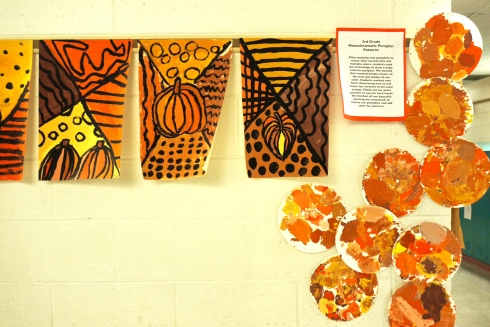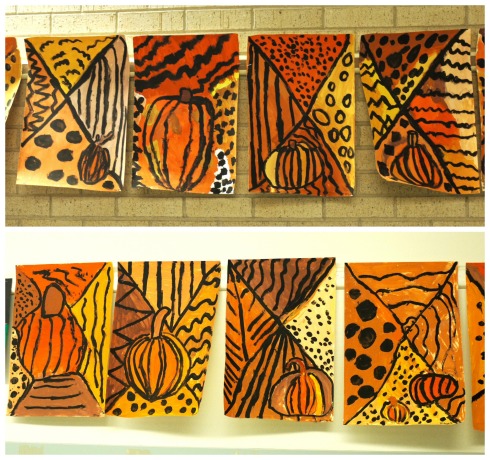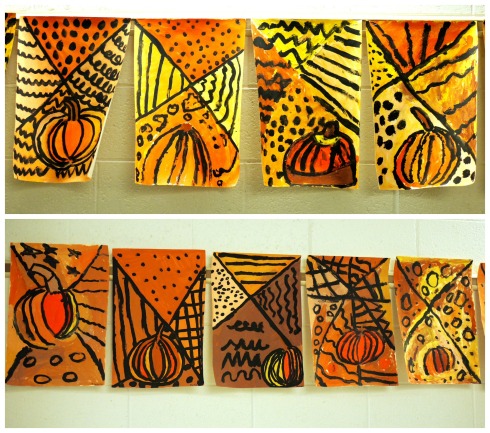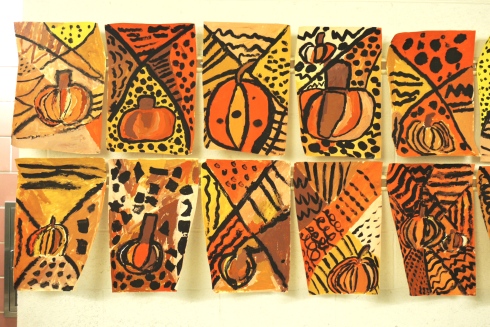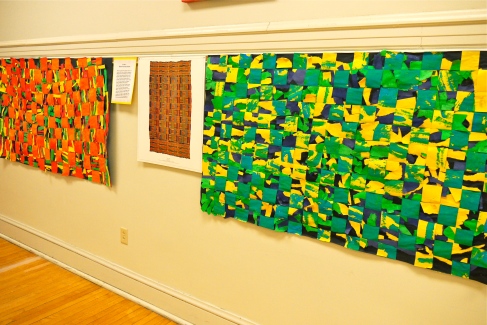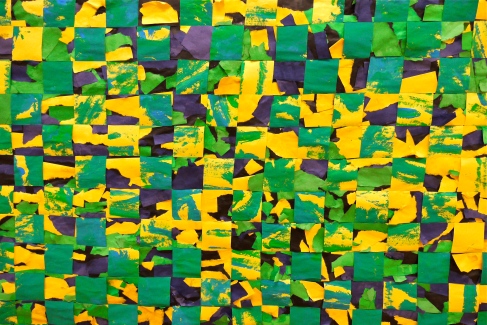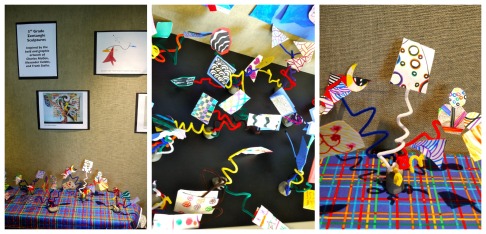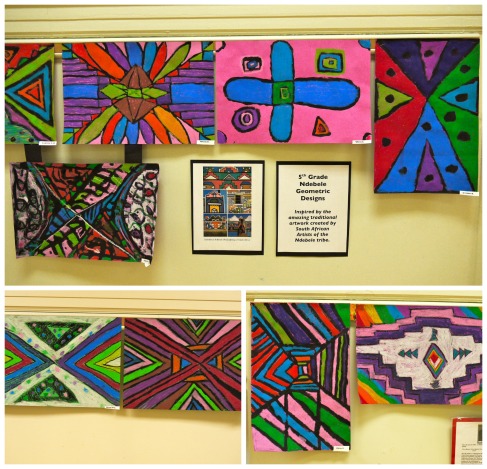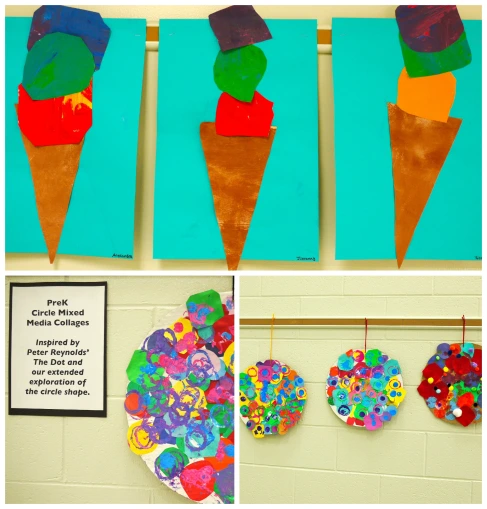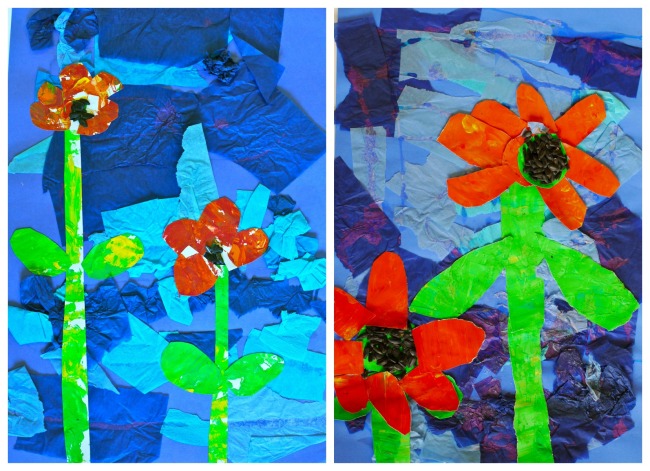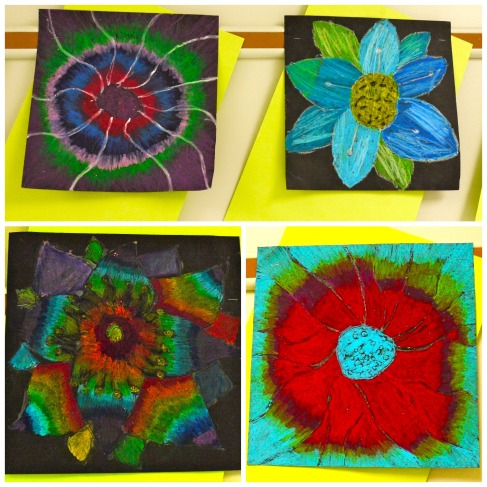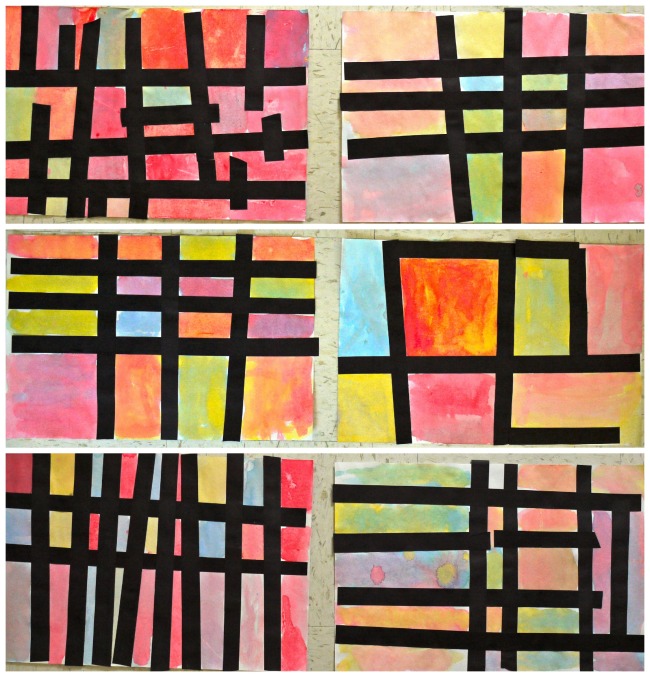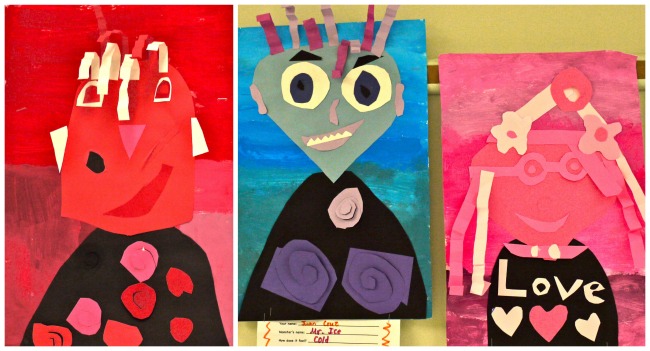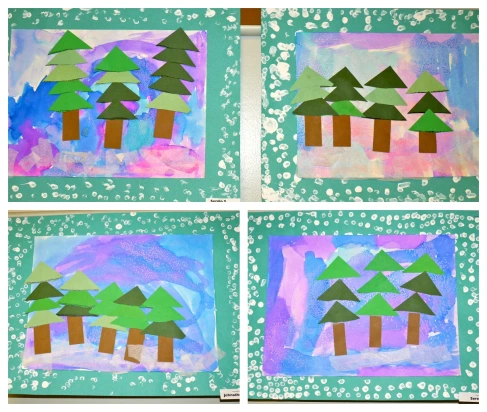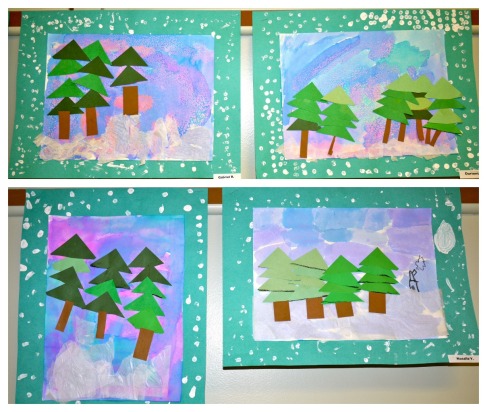We have been busy settling into the new school year and have just begun focusing on our fall-themed projects. The next month I will be posting some spectacular and colorful art projects created in the past autumn seasons. The leaves here in Wisconsin have just started to change so what perfect timing!
This was a lesson third grade students worked diligently on last fall. We started the lesson by observing a real pumpkin and making a list of adjectives to describe it. Students noticed that the pumpkin was shaped like a sphere with curved lines that started at the stem. These lines also gave the pumpkin a bumpy texture. We practiced drawing the pumpkin from life, making sure to carefully observe each detail in order to create the most realistic pumpkin. Once confident, students drew another large pumpkin on their final papers. They then drew two diagonal lines to create a background.
The next class, students again observed the pumpkin and came up with a list of colors they noticed. We practiced mixing new colors out of yellow, orange, white, and brown paint. This was by far the most joyful part of the project as students were amazed at all the new color combinations they were able to create. They blended colors for the pumpkin then also had to mix 4 different tints for the background.
Lastly, students used their knowledge of line to create bold patterns for their backgrounds using black paint. The simple outlines and patterns also helped to emphasize their lovely pumpkins as well as all the great new color combinations created.
Inspired by this lovely pumpkin project.
